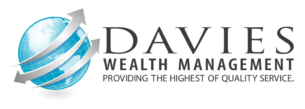With only seven weeks remaining in 2025, Stuart FL retirees face a critical window for tax-efficient wealth management decisions. The federal estate tax exemption of $13.99 million per individual will plummet to approximately $6-7 million on January 1, 2026, creating unprecedented urgency for year-end planning. Additionally, Florida's zero state income tax advantage combined with recent federal tax law changes makes this an optimal time for strategic moves.
Both Roth conversions and charitable giving offer powerful benefits for comprehensive wealth management, but the most sophisticated approach involves understanding how to leverage both strategically. As we frequently discuss on our podcast at www.1715tcf.com, the key lies in aligning these strategies with your specific financial situation and long-term goals.
The Power of Strategic Charitable Giving
Charitable giving provides immediate and long-term tax benefits specifically tailored to high-net-worth individuals. By donating appreciated assets such as stocks or real estate, you avoid paying capital gains taxes on those assets while simultaneously reducing your taxable income. This approach proves especially valuable for retirees with concentrated positions in single stocks or property.
Advanced Gifting Techniques
Beyond standard cash donations, several sophisticated techniques maximize tax efficiency for Stuart retirees. The annual gift tax exclusion of $19,000 per recipient means you can transfer $38,000 per year as a married couple to each child without touching lifetime exemptions. Direct payment of tuition or medical bills to providers falls outside annual exclusion limits entirely: a grandparent could pay a grandchild's $50,000 college tuition directly to the university with no tax consequences.
For those focused on legacy building, charitable giving reduces your taxable estate size during your lifetime, lowering eventual estate taxes for heirs. Importantly, you can coordinate charitable contributions strategically with Roth conversions. When you donate $50,000 in appreciated assets to charity in the same year you convert $100,000 from a traditional IRA to a Roth, the charitable deduction offsets taxable income generated by the conversion, effectively lowering the taxes owed on that conversion.

Roth Conversions: Building Tax-Free Wealth
Roth conversions involve transferring funds from traditional IRAs or 401(k)s to Roth IRAs. While conversions are taxable in the year they occur, the long-term benefits address fundamental retirement concerns that we often explore in our holistic financial planning approach. Roth IRAs grow entirely tax-free, and qualified withdrawals in retirement incur no taxes, providing superior control over retirement cash flow compared to traditional accounts.
Key Advantages for Florida Retirees
Roth IRAs eliminate Required Minimum Distributions (RMDs), a critical advantage for retirees seeking to minimize annual tax liability. Additionally, heirs who inherit Roth IRAs receive a tax-free inheritance: withdrawals don't trigger income taxes, providing an exceptionally efficient wealth transfer mechanism. For retirees expecting higher tax brackets in future years, converting at today's rates locks in current tax levels and enables tax-free income later.
Important Conversion Considerations
One significant limitation: Roth conversions are now permanent and cannot be undone, making careful analysis essential before execution. Converting large amounts can trigger higher Medicare premiums (IRMAA thresholds), increase taxation of Social Security benefits, and potentially affect other income-based benefits. The conversion itself creates immediate taxable income: you must have sufficient funds outside the IRA to pay conversion taxes, or you'll diminish conversion benefits.
Florida's Unique Tax Advantages
Stuart retirees benefit from exceptional tax circumstances that enhance both strategies. Florida's zero state income tax means no state-level tax burden on retirement income, making it an ideal location for implementing these wealth management strategies. The One Big Beautiful Bill Act (OBBBA), signed July 4, 2025, increased the standard deduction permanently to $31,500 for married couples filing jointly and introduced a Senior Bonus Deduction of $12,000 for qualifying married couples aged 65+ through 2028.
The SALT deduction cap increased from $10,000 to $40,000 for taxpayers earning under $500,000 through 2029, benefiting homeowners with substantial property taxes. These changes create additional opportunities for tax-efficient strategies that complement both charitable giving and Roth conversions.

Strategic Comparison: Which Approach Works Best?
When evaluating these strategies, several key factors emerge:
Immediate Tax Benefits: Charitable giving provides immediate itemized deductions that reduce current taxable income, while Roth conversions create immediate taxable income with no current deduction.
Long-Term Tax Efficiency: Charitable giving permanently removes assets from your taxable estate, while Roth conversions create tax-free growth and withdrawals forever.
Impact on Required Distributions: Charitable giving has no impact on RMDs from traditional accounts, while Roth conversions eliminate future RMDs entirely.
Heir Benefits: Charitable giving fulfills philanthropic legacy goals, while Roth conversions provide tax-free inheritance to beneficiaries.
Flexibility: Charitable giving strategies are reversible and adjustable annually, while Roth conversions are permanent and cannot be undone.
Tailored Recommendations for Different Scenarios
For High-Net-Worth Retirees (Estate Values >$6.7M)
If your estate exceeds the projected 2026 exemption levels, prioritize maximizing the 2025 federal exemption before it drops. Implement sophisticated gifting strategies including 529 plan superfunding ($190,000 per married couple to each beneficiary by January 1) and annual exclusion gifts of $38,000 per child.
Consider donating appreciated assets to charity to avoid capital gains while reducing taxable income. Combine this with a modest Roth conversion, using the charitable deduction to offset conversion income. This dual approach efficiently transfers wealth while minimizing 2026 tax exposure.
For Retirees with Concentrated Holdings
If you hold significant positions in individual stocks or real estate, donate appreciated assets to charity to eliminate capital gains taxes entirely while generating an itemized deduction. For remaining funds, consider Roth conversions in tranches rather than one large conversion to manage IRMAA impacts and Social Security taxation thresholds.
Florida's lack of state income tax makes smaller annual conversions particularly efficient for retirement income planning.

For Income-Sensitive Retirees
If you're borderline on Medicare subsidy thresholds or trying to minimize Social Security taxation, charitable giving often proves superior to Roth conversions because it doesn't increase current-year taxable income. Coordinate giving with existing deduction strategies to maximize benefits.
However, if you anticipate significant asset growth over decades, selective Roth conversions in lower-income years will generate substantial tax-free wealth for future years.
For Legacy-Focused Families
The most comprehensive approach combines all strategies: use annual gifting to transfer wealth to children at current exemption levels, execute strategic Roth conversions to create tax-free inheritance assets, and use charitable giving to support causes reflecting your values while obtaining tax deductions.
This integrated approach addresses wealth transfer, tax minimization, and philanthropic goals simultaneously, creating a robust foundation for multi-generational wealth preservation.
Taking Action Before December 31
The critical factor is beginning implementation immediately. With December 31 marking both the estate tax exemption deadline and the year-end for all tax planning opportunities, delaying these decisions beyond mid-December eliminates planning flexibility.
Consider these immediate action steps:
- Evaluate your estate size relative to the projected 2026 exemption levels
- Identify appreciated assets suitable for charitable giving
- Calculate optimal Roth conversion amounts that avoid pushing you into higher tax brackets or IRMAA thresholds
- Coordinate timing between charitable gifts and conversions to maximize tax efficiency
- Consult with your tax professional to model scenarios specific to your situation
As fee-based financial planners in Stuart FL, we recognize that effective wealth management requires understanding how these strategies interconnect with your overall financial picture. The most successful retirees typically employ a combination approach, leveraging charitable giving for immediate tax relief while building tax-free wealth through strategic Roth conversions.
The window for 2025 planning closes rapidly, but the benefits of taking action now will compound for decades. Whether you choose charitable giving, Roth conversions, or a strategic combination of both, the key lies in moving forward with a comprehensive plan that aligns with your unique circumstances and long-term objectives.



Leave a Reply